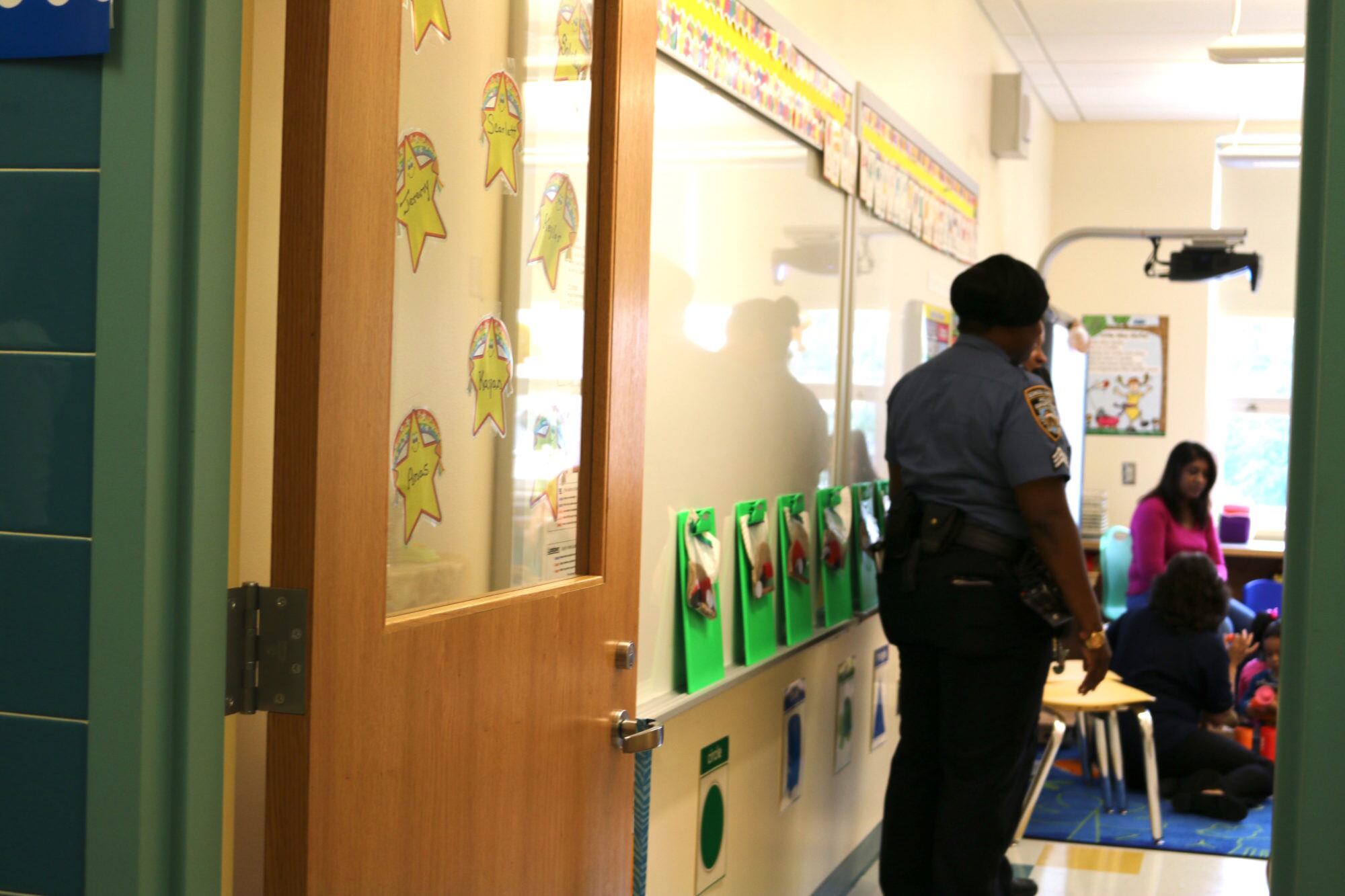Nearly a month after a shooting inside a South Memphis school, the city’s police chief is rethinking how law enforcement communicates and responds to safety threats in schools.
“I’m new here, and I’m hoping to make sure that we have communications protocols that help intercept any potential violence in the schools,” Memphis Police Chief Cerelyn “C.J.” Davis said Wednesday at a virtual question-and-answer session with reporters.
Davis, who in June became the first woman to lead the Memphis police department, said she is open to establishing a district police force, or a “peace force.”
While the department attempts to provide “timely and relevant” information about safety concerns to schools, Davis said her goal is to work with administrators to prevent crises — not just respond to them.
Davis said she will continue conversations with Shelby County Schools Superintendent Joris Ray and former Memphis Police Director Toney Armstrong as they lead a review of district safety practices and consider forming a peace force. That force would be made up of armed school resource officers rather than the sheriff’s deputies who currently police Shelby County Schools.
With those talks ongoing, “we are certainly supportive of any type of new initiatives that could help support public safety in our schools,” Davis told reporters.
Former Superintendent Kriner Cash first floated the idea for the district peace force in 2008. Ray revived the proposal in 2019, arguing that the district would be more effective at controlling officers’ behavior if they reported directly to the school system. At the time, school board members said they weren’t sure that a peace force would improve student treatment. The proposal lost traction — until last month’s shooting.
Armstrong will help the district explore the idea of transitioning to a peace force during the district’s review of school safety policies, Ray said earlier this month, emphasizing the force would focus on restorative practices and building relationships with students.
But any peace force proposal would need support from the school board and, potentially, state lawmakers. Tennessee neither explicitly allows districts to create their own law enforcement agencies, nor does it prohibit it.
Recent discussion about creating a district law enforcement agency also comes as a divided Memphis school board continues to mull the district’s agreement with the Shelby County Sheriff’s Office. Of the 125 armed officers patrolling Memphis schools this school year, 45 are county sheriff’s deputies, the district said in August.
The memorandum of understanding, which calls for the district to contribute $50,000 for the use of 36 deputies stationed in schools, has sparked heated community debate.
Nearly 700 community members have written letters to administrators and school board members demanding the district end its contract with the sheriff’s office, arguing that police in schools feed the so-called school-to-prison pipeline, which disproportionately criminalizes Black and brown children. And numerous students, parents, and advocates have urged the school board to spend the $50,000 on counselors and social workers rather than law enforcement.
An April report from the Brookings Institution found that school policing criminalizes adolescent behavior, escalating cutting class to a truancy charge, and graffiti on bathroom walls to a vandalism charge. And data from the U.S. Department of Education’s Office for Civil Rights shows that school resource officers are more than twice as likely to refer Black students for prosecution compared to their white classmates.
Regina Clark, an activist with the education advocacy organization Stand for Children Tennessee, recalled her children’s experiences attending schools in Washington D.C. when there was a shooting.
“At no time did the law enforcement in the schools save lives,” Clark told the school board on Sept. 28. “What will make them safe is having counselors in the school so that they are not traumatized, and they do not continue to go through mental health issues.”
While Memphis school board member Billy Orgel later expressed his support for the current collaboration with the county sheriff’s office, several other board members took issue with it, saying it didn’t appear to take feedback from hundreds of community members into consideration.
Ultimately, the board opted to send the agreement back to committee, and the debate continues.
A district survey presented to school board members this week found almost 60% of the nearly 12,000 student respondents in grades 4-12 said it’s important for a law enforcement officer — whether a school resource officer or sheriff’s deputy — to be assigned to their school. And about 70% of respondents said having an officer at school makes them feel safe.
The district’s agreement with the sheriff’s office will come before the board again in November.






